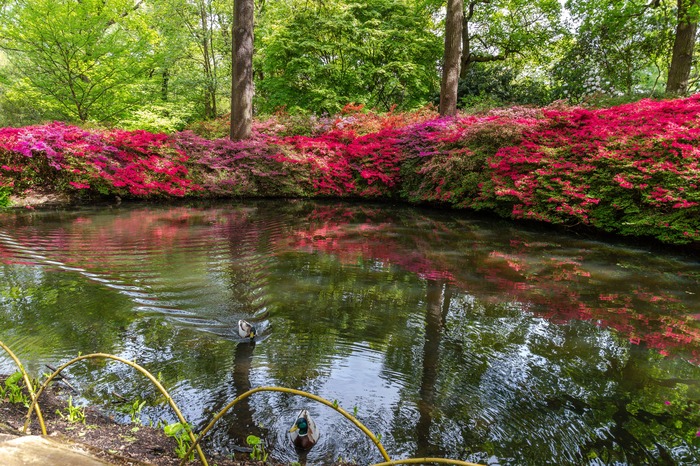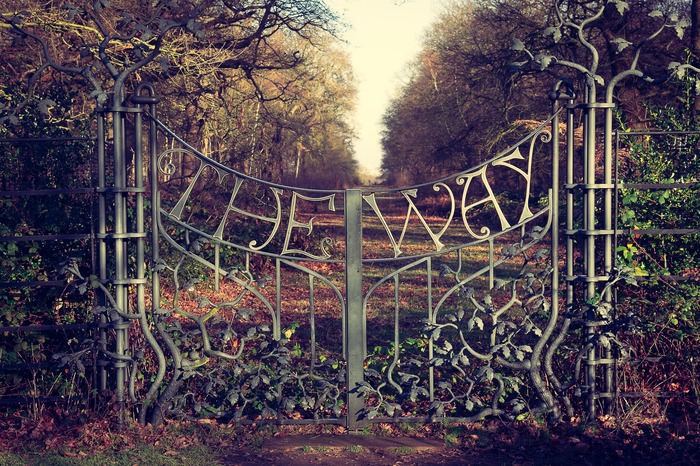
What to see in Richmond Park?
Richmond Park is the largest park in London - with an area of 9.5 km2. It is one of the 8 Royal Parks in the capital, a must for its wildlife.
Originally a hunting ground, Richmond Park is today a national nature reserve.
You can meet the oldest oak trees in the country as well as different animal species: many gray squirrels and nearly 650 deer and hinds in the wild - present in the park for over 300 years!
advertisement
Deer and hinds are used to the presence of humans, so it is easy to observe and approach them.
The area of the park is comparable to that of the Bois de Vincennes in Paris, and almost 3 times that of Central Park in New York.
During the slab period (September), it is not recommended to seek to approach deer.
Visit Richmond Park
The most authentic attraction in Richmond Park is the encounter with free-range deer and does.

Check out the weather forecast before your visit - wildlife of Richmond Park tends to hide and protect themselves from the rain and cold.
Isabella Plantation
The Isabella Plantation is a 16 hectare woodland garden - set in a Victorian woodland plantation planted in the 1830s.
First opened to the public in 1953, it is best known for its evergreen azaleas, which line ponds and streams.

Their flowering is at its peak at the end of April and the beginning of May.
Member of the parks conservation designation as a Site of Special Scientific Interest, the site is managed largely with nature in mind and the gardens are managed according to organic principles.
King Henry's Mound
The ascent to King Henry's Mound offers a superb panoramic view over Richmond Park, but also over the Thames Valley to the west - as well as a distant view of St. Paul's Cathedral to the east.
The site has a telescope!
The view of St. Paul's Cathedral has been faithfully preserved by generations of landscapers who have created a tree-lined line of sight - 16 km - from the mound to the dome of the cathedral. The view is now protected and no construction is allowed on the sightline.
Legend has it that this steep mound, located in the gardens of Pembroke Lodge, is where King Henry VIII stood on May 19, 1536 to watch a rocket fired from the tower of London. This rocket was the signal that his wife - Anne Boleyn - had been executed for treason and that he could then marry Lady Jane Seymour.
It would actually be a prehistoric Bronze Age burial chamber - later used as a viewing point for hunting and falconry.
"The Way" gates
Designed by blacksmith artist Joshua De Lisle, the "The Way" gates has been installed at Richmond Park in 2011, to mark the tercentenary of Saint Paul's Cathedral. It sits on the edge of Sidmouth wood.
On the doors, the concave oak branches reflect the dome of Saint Paul's Cathedral, and the troglodyte below in the leaves refers to the architect of that same cathedral: Sir Christopher Wren.

The inscription "The Way" is an epitaph by Edward Goldsmith, author of the book of the same name. The texture of the bark was created to encourage the growth of algae and lichens down the gates to echo the landscape of the park.
The portal was kindly donated by the family of famous environmentalist and founder of The Ecologist magazine: Edward Goldsmith.
Ian Dury Bench
The Ian Dury Bench is located at Poet's Corner at Pembroke Lodge Gardens, in memory of the famous rock star for his songs Hit Me with Your Rhythm Stick and What a Waste.
On the bench are the words "Reasons to be cheerful", the title of another famous song by Dury.
Ian Dury, who died in 2000, used to take his children to Richmond Park - this bench was donated to the park by his family in his memory, in 2002.
Sports activities
With its many marked and very well-maintained trails, Richmond Park lends itself very well to long walks or bike rides - but you can also go fishing here, golf, horse riding, rugby, etc.
Richmond Park prices
Entry to Richmond Park is free.
Richmond Park opening hours
Richmond Park is open year round:
- Every day from 7 a.m. to 7:30 p.m.
Getting to Richmond Park
Richmond Park is located southwest of downtown London, in the Richmond district: TW10 5HS, London.
To get there, 3 options:
- Metro: District line, stop Richmond Station.
- Bus: lines 190, 391, 419, R68, 33, 337, 485, 85, 265, K3, 72, 493, 65 and 371.
- Train: Richmond station.
Near Richmond Park
Take advantage of your visit to Richmond Park to visit:
- Hampton Court Palace
- Ham House
- Kew Gardens
- Marble Hill House
- Richmond Bridge